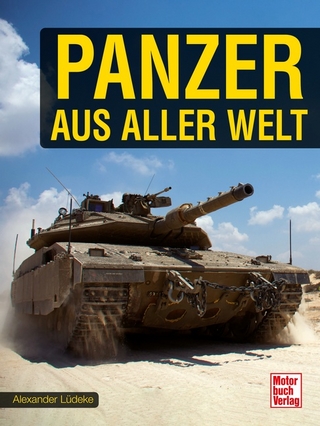
Avar-Age Polearms and Edged Weapons
Brill (Verlag)
978-90-04-22661-6 (ISBN)
In Avar-Age Polearms and Edged Weapons, Gergely Csiky offers a presentation of close combat weapons of a nomadic population that migrated from Inner Asia to East-Central Europe. During the late 6th – early 7th centuries, the Avars led successful military campaigns against the Balkan realms of the Byzantine Empire, facilitated by their cavalry’s use of stirrups for the first time in Europe.
Besides the classification, manufacturing techniques, fittings, suspension, distribution, and chronology of polearms and edged weapons known from Avar-age burials, a special emphasis is laid on the origins and cultural contacts of these weapons, among them the first edged weapons with curved blades: the sabres. The social significance and, function of these artefacts is discussed in order to place them in nomadic warfare.
Gergely Csiky, Ph.D. (2010, Budapest), Institute of Archaeology, RCH HAS, is a researcher of Avar archaeology, weapon and military history. He has published several articles on Avar-age weaponry and weapon burials.
Contents
Acknowledgements ix
List of Figures, Maps and Diagrams xi
Abbreviations xxvi
Abbreviation of Museums xxxi
1 Introduction 1
1 Objectives 4
2 History of Research 7
2.1 Antiquarian Perspective and Cataloguing Artefacts 8
2.2 Classification and Typology 11
2.3 Ethnic Interpretations and Questions of Origin 16
2.4 Social Reconstruction 23
3 Methods Applied in this Study 28
3.1 Terminology and the Methods of Classification 28
3.2 Technology 46
3.3 Chronology and Distribution 53
3.4 Armament and Society 61
3.5 Methods of Data Collection 64
2 Polearms 68
1 Classification of Polearms 69
1.1 Reed-shaped Spearheads (P.I) 70
1.2 Conical Spearheads (P.II) 104
1.3 Lenticular (Leaf-shaped) Spearheads (P.III) 111
1.4 Triangular Spearheads (P.IV) 135
1.5 Javelins (P.V) 141
2 Ferrules 143
3 Shafts 144
4 Representations of Polearms 146
5 Conclusions 149
3 Edged Weapons 152
1 Classification of Edged Weapons 153
1.1 Double-edged Swords (E.I) 154
1.2 Single-edged Swords (E.II) 173
1.3 Sabres (E.III) 192
1.4 Seaxes (E.IV) 215
2 The Fittings of Edged Weapons 232
2.1 The Hilt 232
2.2 The Crossguard 245
2.3 Decoration of the Scabbard 259
2.4 The Chape 264
3 Suspension 265
3.1 One-point Suspension 266
3.2 Two-point Suspension 273
4 Conclusions 288
4 Technology—Manufacturing Techniques 292
5 Chronology—Continuity and Discontinuity 299
1 Early Avar I. (568–620s) 299
2 The Turn of the 6th–7th Century 301
3 Early Avar II. (610–650) 302
4 Middle Phase (650–700) 302
5 Late Avar I. (700–750) 303
6 Late Avar II. (750–820?) 304
7 General Types Characteristic of Longer Timespans 305
6 Origins and Cultural Contacts 306
1 The East and the Steppe Lands 306
1.1 Polearms 307
1.2 P-shaped Suspension Loops 311
1.3 Ring-pommel Swords 315
1.4 Sabres 318
2 Southern Mediterranean Region 326
2.1 Crossguards Cast of Copper Alloy 328
2.2 P-shaped Suspension Loops 331
3 Western Germanic Area 332
3.1 Early Phase 332
3.2 Middle and Late Phase 336
3.3 Questions in the Research on Seaxes 342
3.4 Chronological Problems of Seaxes and the Difficulties of
Chronological Synchronisation 345
7 Armament and Society 348
1 Deposition of Weapons in Burials—Cemeteries and Regional
Differences 348
2 The Deposition of Polearms and Edged Weapons in Burials—
Chronology and Combinations 359
3 The Position of Polearms and Edged Weapons in Burials 362
3.1 Polearms 362
3.2 Edged Weapons 372
4 Weapons and Age Groups of the Deceased 382
5 Conclusions 389
8 Armament and Cavalry Warfare in the Aver-age Carpathian Basin 391
9 General Conclusions 400
References 409
Maps 454
Index 517
| Erscheinungsdatum | 10.10.2015 |
|---|---|
| Reihe/Serie | East Central and Eastern Europe in the Middle Ages, 450-1450 ; 32 |
| Verlagsort | Leiden |
| Sprache | englisch |
| Maße | 155 x 235 mm |
| Gewicht | 977 g |
| Themenwelt | Natur / Technik ► Fahrzeuge / Flugzeuge / Schiffe ► Militärfahrzeuge / -flugzeuge / -schiffe |
| Geisteswissenschaften ► Archäologie | |
| Geschichte ► Allgemeine Geschichte ► Mittelalter | |
| Geschichte ► Teilgebiete der Geschichte ► Militärgeschichte | |
| Geschichte ► Teilgebiete der Geschichte ► Technikgeschichte | |
| Sozialwissenschaften ► Politik / Verwaltung | |
| Technik | |
| ISBN-10 | 90-04-22661-3 / 9004226613 |
| ISBN-13 | 978-90-04-22661-6 / 9789004226616 |
| Zustand | Neuware |
| Haben Sie eine Frage zum Produkt? |
aus dem Bereich


